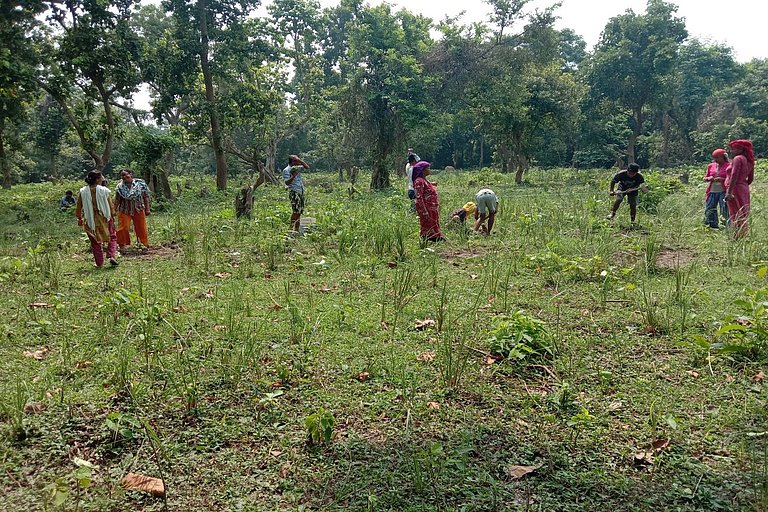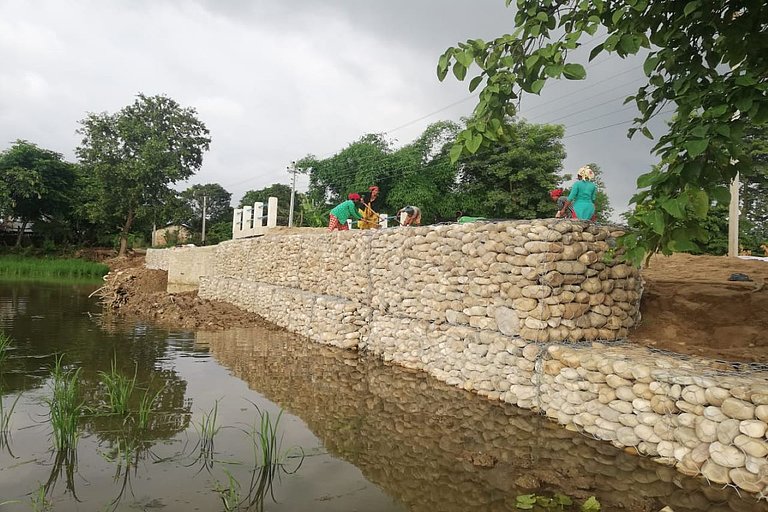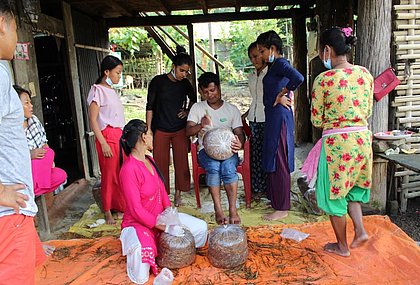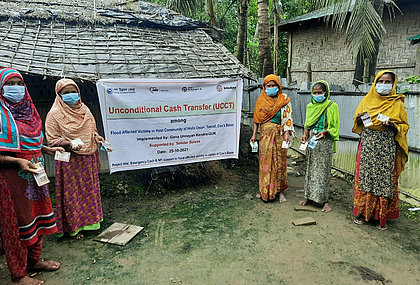In our disaster risk reduction project, we worked in the rural municipality of Raptisonari in the Banke district of West-Nepal. Raptisonari is recurrently affected by severe flooding. Every year during the monsoon season, numerous families lose their homes and fields due to flooding. In cooperation with our Nepalese partner organization Bheri Environmental Excellence Group, or BEE Group for short, community-based early warning systems were set up, disaster action plans developed and a total of nine disaster management committees established. The disaster management committees raised public awareness on disaster preparedness, established early warning systems in the communities, collected data on disaster-affected people, and distributed relief supplies. Also, the disaster management committees had an active role in ensuring prevention measures during the COVID-19 pandemic in the project region in the past two years. Through several resource mapping sessions with the committees, digital GIS-based hazard and vulnerability maps highlighting potential risks, rescue routes, and safe spaces in the event of flooding had been designed for each of the 19 communities. Another key task of the committees was to mobilize 45 task forces. Consisting of 225 members in 9 wards, these Task Forces received intensive training on information coordination, early warning, search and rescue, first aid, damage analysis, relief rescue as well as WASH (Water, Sanitation and Hygiene). Both the disaster management committees and the Task Forces work closely together.
Furthermore, with the support of the project, an evacuation route near the Rapti River that had been damaged by earlier flooding was restored with the active participation of local women. This evacuation route can now be easily reached and safely used even during heavier floods in the monsoon season. In order to sensitize the communities to other prevailing dangers, radio campaigns were broadcasted and public street theaters were held. Through these awareness-raising measures, various precautionary measures were addressed: In case of an earthquake, a fire, or during a cold wave in winter. Finally, two multi-purpose emergency shelters were built or rebuilt in Raptisonari, each of which can provide a safe roof over the heads of up to 42 people in the event of a disaster.
How women had been actively engaged in the development process of their communities

Furthermore, the project established and mobilized six "Women Empowerment Centres" with a total of 150 members. These centres provided a safe platform for women to meet and exchange ideas on various issues important to the community. For example, they organized dialogues on prevailing issues concerning education, employment, entrepreneurship and women's rights. They also disseminated information in their communities on disaster preparedness and ways to generate income. Women participated in trainings on leadership skills and social mobilization/advocacy. All members of the women's centres run a goat, pig or poultry farm or are involved in vegetable or rice farming and have been trained accordingly. The women's groups also took part in planting trees in the community's so-called "community forests." So far, 6,599 fruit trees have been planted in three forest areas covering a total area of 5.32 hectares. The harvesting of lemon, bamboo and moringa species has become an important source of income, while maintaining biodiversity. Also, part of the income is used for disaster management in the communities. To prevent soil erosion and flooding of the West Rapti River, 77,717 bamboo seedlings and halfa and vetiver grasses were planted along the riverbanks and embankments. To generate additional income opportunities, the project assisted the community members in establishing a milk collection centre and repairing a mentha oil extraction plant. Various measures that shall enhance the income situation of the local communities and hence make them more resilient towards future climate shocks and disasters.
Projectinfo
| Project | Building Resilience of Communities through Economic Development and Capacity Development |
|---|---|
| Place/Region | Nepal |
| Partner | Bheri Environmental Excellence Group (BEE-Group) Nepal |
| Target group | More than 30,000 people, including women, farmers, socially excluded groups |
| Activities |
|
| Duration | 1st September 2019 to 31st December 2021 |
| Budget | 148,754 Euro |
| Sponsor | ADH, AWO International, Raptisonari Rural Municipality |


